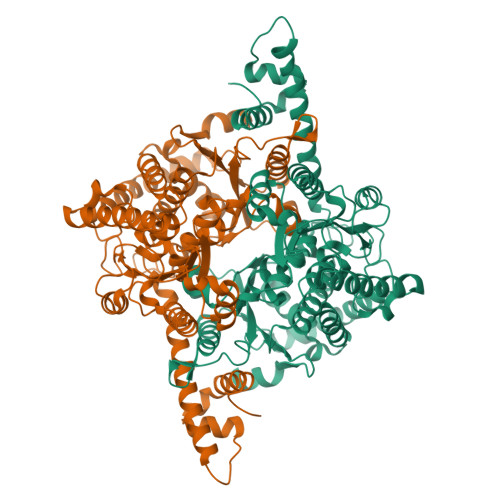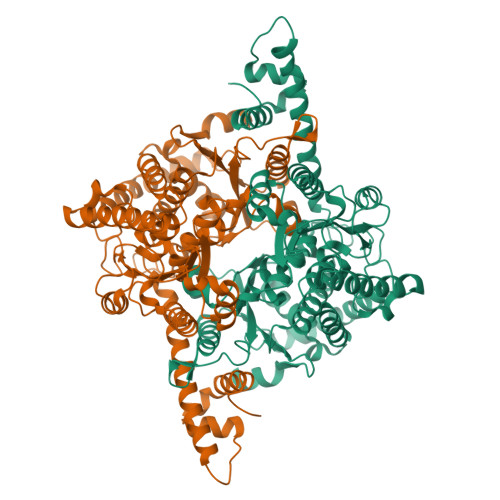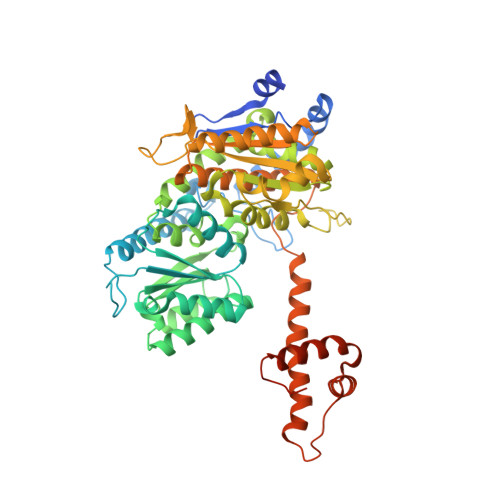Engineering of the cytosolic form of phosphoglucose isomerase into chloroplasts improves plant photosynthesis and biomass.
Gao, F., Zhang, H., Zhang, W., Wang, N., Zhang, S., Chu, C., Liu, C.(2021) New Phytol 231: 315-325
- PubMed: 33774822
- DOI: https://doi.org/10.1111/nph.17368
- Primary Citation of Related Structures:
7E76, 7E77, 7E78 - PubMed Abstract:
Starch is the most abundant carbohydrate synthesized in plant chloroplast as the product of photosynthetic carbon assimilation, serving a crucial role in the carbon budget as storage energy. Phosphoglucose isomerase (PGI) catalyzes the interconversion between glucose 6-phosphate (G6P) and fructose 6-phosphate (F6P), which are important metabolic molecules in starch synthesis within chloroplasts and sucrose synthesis in cytosol. Here, we found that the specific activity of recombinantly purified PGI localized in cytosolic PGI (PGIc) was much higher than its plastidic isoenzyme counterpart (PGIp) originated from wheat, rice and Arabidopsis, with wheat PGIc having by far the highest activity. Crystal structures of wheat TaPGIc and TaPGIp proteins were solved and the functional units were homodimers. The active sites of PGIc and PGIp, constituted by the same amino acids, formed different binding pockets. Moreover, PGIc showed slightly lower affinity to the substrate F6P but with much faster turnover rates. Engineering of TaPGIc into chloroplasts of a pgip mutant of Arabidopsis thaliana (atpgip) resulted in starch overaccumulation, increased CO 2 assimilation, up to 19% more plant biomass and 27% seed yield productivity. These results show that manipulating starch metabolic pathways in chloroplasts can improve plant biomass and yield productivity.
Organizational Affiliation:
State Key Laboratory of Plant Cell and Chromosome Engineering, Institute of Genetics and Developmental Biology, The Innovative Academy of Seed Design, Chinese Academy of Sciences, Beijing, 100101, China.
















